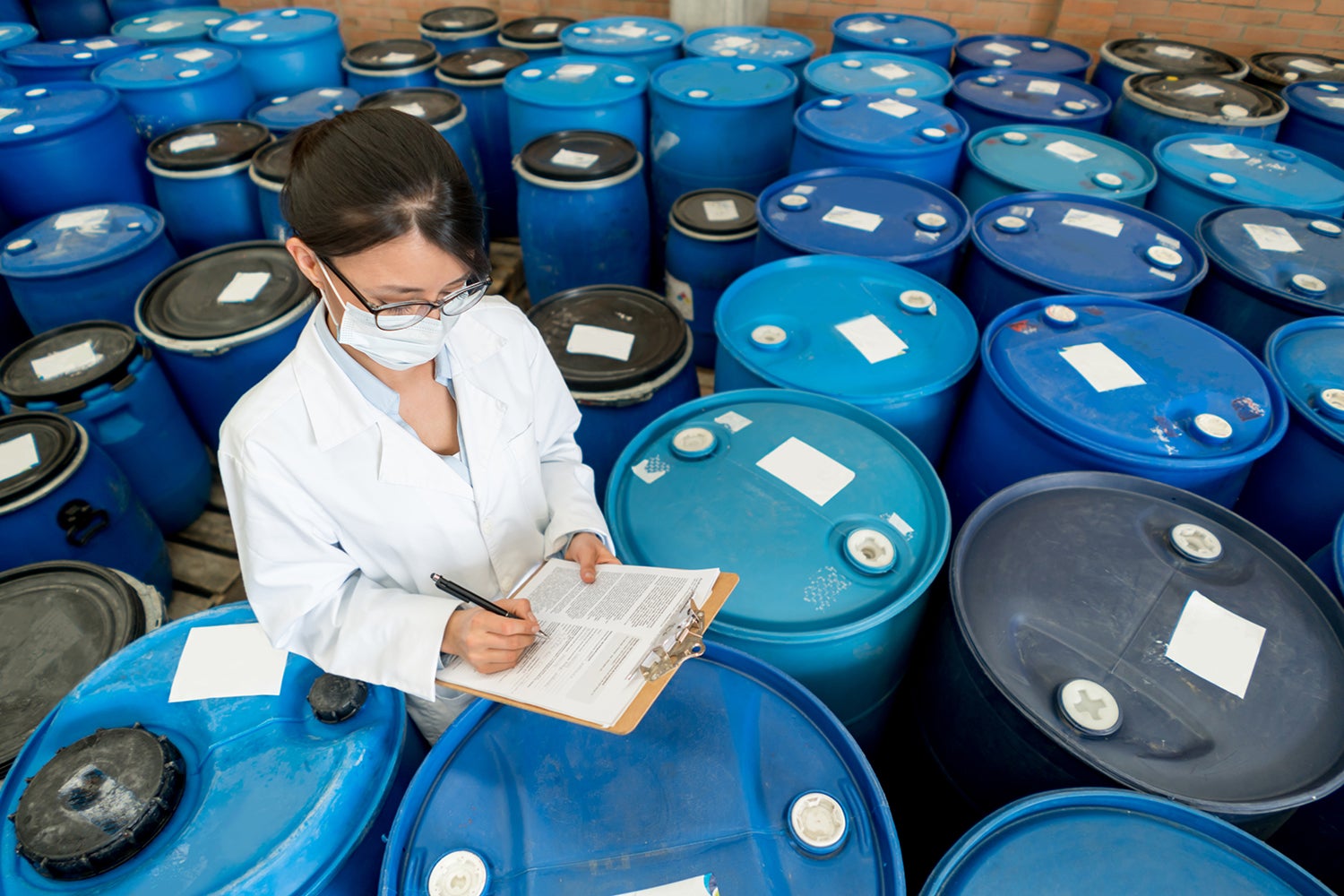 Take a proactive approach to elevate your product compliance program on PFAS. Join our webinar to learn how Assent can help —Register Now
Take a proactive approach to elevate your product compliance program on PFAS. Join our webinar to learn how Assent can help —Register Now
EPA PFAS Announcement: TSCA PFAS Requirements Published
The long-awaited announcement from the U.S. Environmental Protection Agency (EPA) on per- and polyfluoroalkyl substances (PFAS) under Section 8(a)(7) of the Toxic Substances Control Act (TSCA) came out on September 28, finally addressing some of the manufacturing industry’s pressing questions about PFAS requirements in the U.S. market. Currently, manufacturers are awaiting the publication of the final rule in the Federal Register.
While there were already numerous PFAS regulations across the globe, including at the U.S. state level, this EPA PFAS announcement will affect the entire product compliance regulatory landscape.
Register for Assent’s webinar, Unpacking the Recent Announcement on PFAS Requirements Under TSCA on October 12, to learn how to protect your business from the disruptions caused by this new federal rule.
This article summarizes the regulatory requirements laid out in the new EPA PFAS announcement, along with the top three market impacts your business needs to be ready for. If you’re not ready to meet the requirements, you face massive disruption risks.
New EPA PFAS Requirements Explained
TSCA obligates the EPA to monitor and phase out hazardous chemicals in the U.S. market. PFAS chemicals are known to be persistent and bioaccumulative — according to national health authorities, approximately 97% of Americans have PFAS in their bloodstreams.
The new rule will require manufacturers to collect historical supply chain PFAS data and roll it up into PFAS reports. Some of the data required includes (but is not limited to) :
- PFAS uses
- Production volumes
- Import volumes
- Disposal
- Exposures
- Hazards
- Toxicity information
- For a full list of required data, see the pre-published final rule.
Which PFAS Are Covered?
The EPA has provided a definition for which PFAS must be reported under section 8(a)(7). Matching this definition against the TSCA Inventory and Low Volume Exemption claims, the EPA has identified 1,462 PFAS chemicals, with half of those actively being used in the U.S. market. All PFAS that meet the EPA’s definition for this rule must be reported, even if they are not currently on the TSCA Inventory or claiming a Low Volume Exemption.
Who Is in Scope of the New TSCA PFAS Requirements?
The new TSCA section 8(a)(7) PFAS reporting requirements cover businesses that manufacture or import, or have manufactured or imported, PFAS since January 1, 2011. This includes importation of PFAS that have already been incorporated into articles, such as articles containing PFAS as part of surface coatings or included in electrical equipment. There are no de minimis exemptions for small volume importers or small businesses.
However, the EPA’s final PFAS reporting rule did streamline reporting requirements for manufacturers that only import PFAS in articles, and for businesses that only make or use small quantities (under 10 kg) for research purposes.
Waste management activities involving the importation of municipal solid waste streams for disposal or destruction, as well as some federal agency activities, are not covered by the reporting requirements.
What Are the TSCA PFAS Reporting Requirements?
Manufacturers will have eighteen months from the rule’s publication in the Federal Register to submit data to the EPA. Small businesses (as defined at 40 CFR 704.3) are not exempt, but the EPA is providing them with an additional six months to report, giving them a total of 24 months to collect and report their PFAS data. Depending on whether a manufacturer needs to use the full form or one of the streamlined forms for article importers or R&D purposes, different data sets may be required. Most businesses will need to report company and plant-site information, chemical-specific information (including CASRN identification number), categories of use of the PFAS, concentration or volume of the PFAS (or imported article), and other article data (if applicable).
This reporting must be done for each year since 2011. All in-scope businesses will need to submit PFAS data using the EPA’s Central Data Exchange (CDX) electronic submission system.
It’s important to note that the EPA stresses “…this rule is not a product testing requirement.” They indicate that manufacturers may be required to make inquiries outside of the organization to both suppliers and customers in order to fill gaps in knowledge. Per the EPA, “this standard carries with it an exercise of due diligence.” It will likely take manufacturers months to survey supply chains for PFAS use, making reporting timelines tight — not only for the EPA’s reporting requirements, but those in states such as Maine, which will also be due during the same timeframe as the EPA’s reports. Assent’s automated supplier engagement solution can help.
How Does the Final TSCA PFAS Rule Compare to the 2021 Proposed Rule?
The final rule on per- and polyfluoroalkyl substances (PFAS) reporting and recordkeeping requirements under TSCA is largely unchanged from the proposed rule, with some key differences:
- The definition of PFAS under the final rule varies slightly from that in the proposal, resulting in a slightly higher number of chemicals on the TSCA Inventory and Low Volume Exemptions that meet the new definition. Substances that meet the definition, but are not currently listed on the Inventory or LVE list, are still required to be reported.
- The final rule provides additional time for data collection — 12 months instead of the six months in the proposal. Followed by a six-month reporting period, this leaves manufacturers with 18 months total from the effective date to collect and report data.
- While the final rule did not exempt small businesses from being required to report, those that meet the given definition are provided with an additional six months, giving them 24 months total from the effective date to collect and report data.
- The final rule includes a streamlined reporting form option for businesses that only import articles and manufacturers of PFAS for research and development. Furthermore, for companies using the “full option,” some previously-required data elements have been removed.
- The final rule provides the ability for “joint submissions” between suppliers and customers in the case of confidentiality concerns. Note this is not available for companies using the “streamlined” option.
Top 3 Impacts of the EPA PFAS Announcement
1. Brace for Increased Customer PFAS Data Requests
Expect a surge in customer inquiries about your product’s components and PFAS compliance. Customers that were waiting until the last minute and for an official EPA announcement will now be demanding PFAS declarations from your business as fast as possible. Companies are expecting “no PFAS” declarations to show their due diligence as much as those that identify where PFAS are located.
Failing to respond quickly can seriously harm your bottom line as buyers rapidly swap out suppliers for those who can prove compliance more quickly. Prepare for some major market shakeups based on who has the best access to data and the ability to communicate it downstream.
To retain your customer base, it’s crucial to have your data ducks in a row so you can respond to requests quickly, and that means having a solution in place to roll up your supply chain PFAS data for product-level reporting requirements. Assent’s PFAS compliance solution automates your supplier outreach to rapidly survey them on PFAS usage, giving you the urgent data you need to stay ahead of rising customer requests. Assent’s product compliance solution allows you to quickly assess which of your products contain PFAS based on your purchased components.
2. Regulatory Uncertainty Is Being Addressed — But Stay Vigilant
Many manufacturers have been feeling adrift waiting for an official announcement from the U.S. EPA. And while they waited, many states — including California, Colorado, Maine, and Minnesota — continued to enact their own PFAS regulations. This created a more complex regulatory landscape.
While the EPA’s TSCA PFAS announcement provides clarity on some of the near-term, federal-level PFAS requirements in the U.S., it’s essential to stay informed about state-level regulations and regulations for any other global markets you serve. The federal TSCA PFAS ruling sets a new baseline for reporting, but many states are not only enacting their own additional reporting requirement and fee structures, but product and usage restrictions as well.
For example, pay close attention to states that have enacted a blanket ban on PFAS in certain product categories such as infant products or food packaging, or even fulsome PFAS in product restrictions for anything other than unavoidable uses.
Assent’s PFAS compliance solution is grounded in regulatory expertise and backed by a team of regulatory researchers who ensure our platform is up to date with current PFAS requirements for TSCA, as well as other global regulations like the Registration, Evaluation, Authorisation, and Restriction of Chemicals (REACH) Regulation or the Stockholm Convention on Persistent Organic Pollutants (POPs). We also provide managed services, expert guidance, and supplier education to help you be confident in your data, even when the regulatory landscape is full of uncertainty.
3. Prepare for Intensified Competition for PFAS-Compliant Parts & Suppliers
The new requirements will trigger a race for both existing stock (before suppliers obsolete PFAS-containing materials) and PFAS-free stock (as everyone shifts to new sources at the same time), driving competition for parts through the roof as manufacturers complete last-time buys or get ahead on new materials. This will affect both delivery and price. Having detailed information about your PFAS usage and what’s coming from your supply chain is vital to getting a head start on identifying where your supply chain risks may be and securing the materials you need.
There’s already scarcity on the horizon: Due to investor and liability pressures, coupled with decreased demand, major chemical manufacturers like 3M have already announced they’ll be discontinuing PFAS products. This EPA TSCA PFAS announcement may force smaller businesses to make some tough decisions about their own product lines.
PFAS restrictions are also affecting manufacturing processes and facilities. Your maintenance, repair, and operations (MRO) may depend on a PFAS product, such as o-rings or gaskets, that may need to be swapped out for compliant alternatives. PFAS chemicals may also be required in processes like electroplating. You will need to evaluate whether any MRO-related purchases in your supply chain contain PFAS, and validate whether they are subject to new federal or state reporting requirements. In some cases, you may need to make capital investments to update or even replace entire pieces of equipment that are incompatible with compliant alternatives.
See how Assent’s PFAS solution lets you uncover hidden PFAS in your supply chain.
Engage Your Suppliers for PFAS Data Now, If You Haven’t Already
Some proactive manufacturers are already collecting supply chain PFAS data so they can be ready to address customer concerns. If you were one of the businesses waiting for the EPA to make a move, this is your sign to implement a solution that engages your supply chain and collects PFAS data. Without visibility into PFAS in the materials you purchase, you risk losing customers and face part shortages and increased delivery and cost. A proactive approach is the only way to protect yourself from disruptions in the wake of this new EPA PFAS announcement.
Assent’s PFAS solution solves for your PFAS compliance requirements by automating supplier outreach to collect vital PFAS data, centralizing your product data, and rolling up your compliance information to your finished products and into PFAS declarations. You get higher quality and more reliable data from your supply chain in less time, helping you avoid disruption as the industry rapidly accelerates toward stricter PFAS restrictions.
Don’t wait! Take a product tour of Assent’s proactive PFAS compliance program now.


